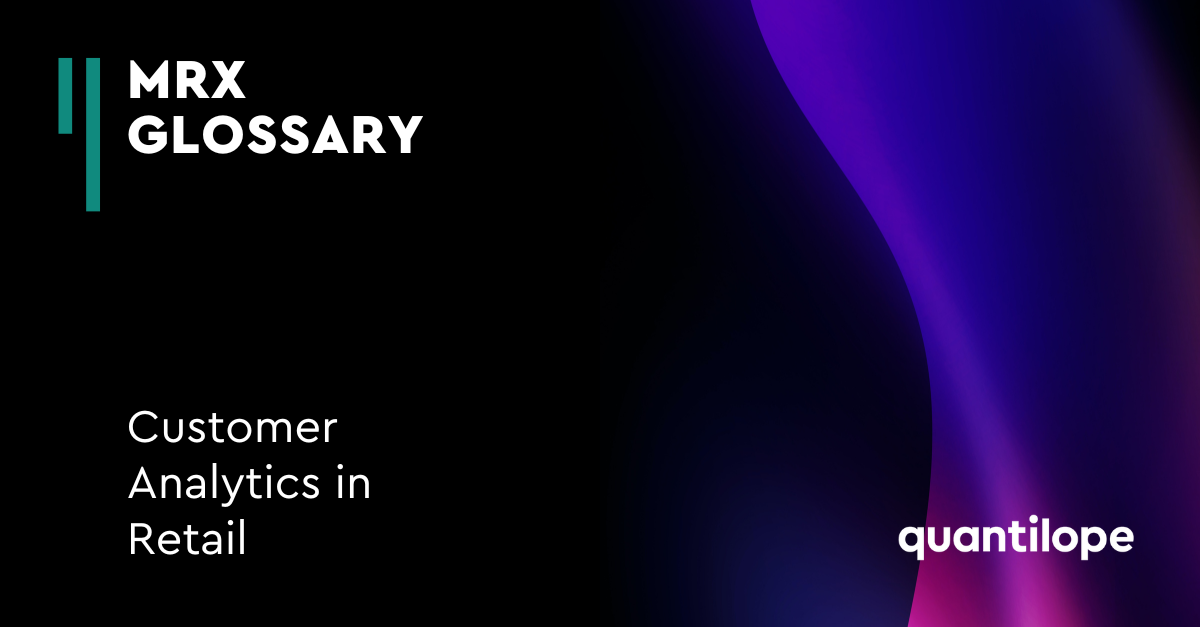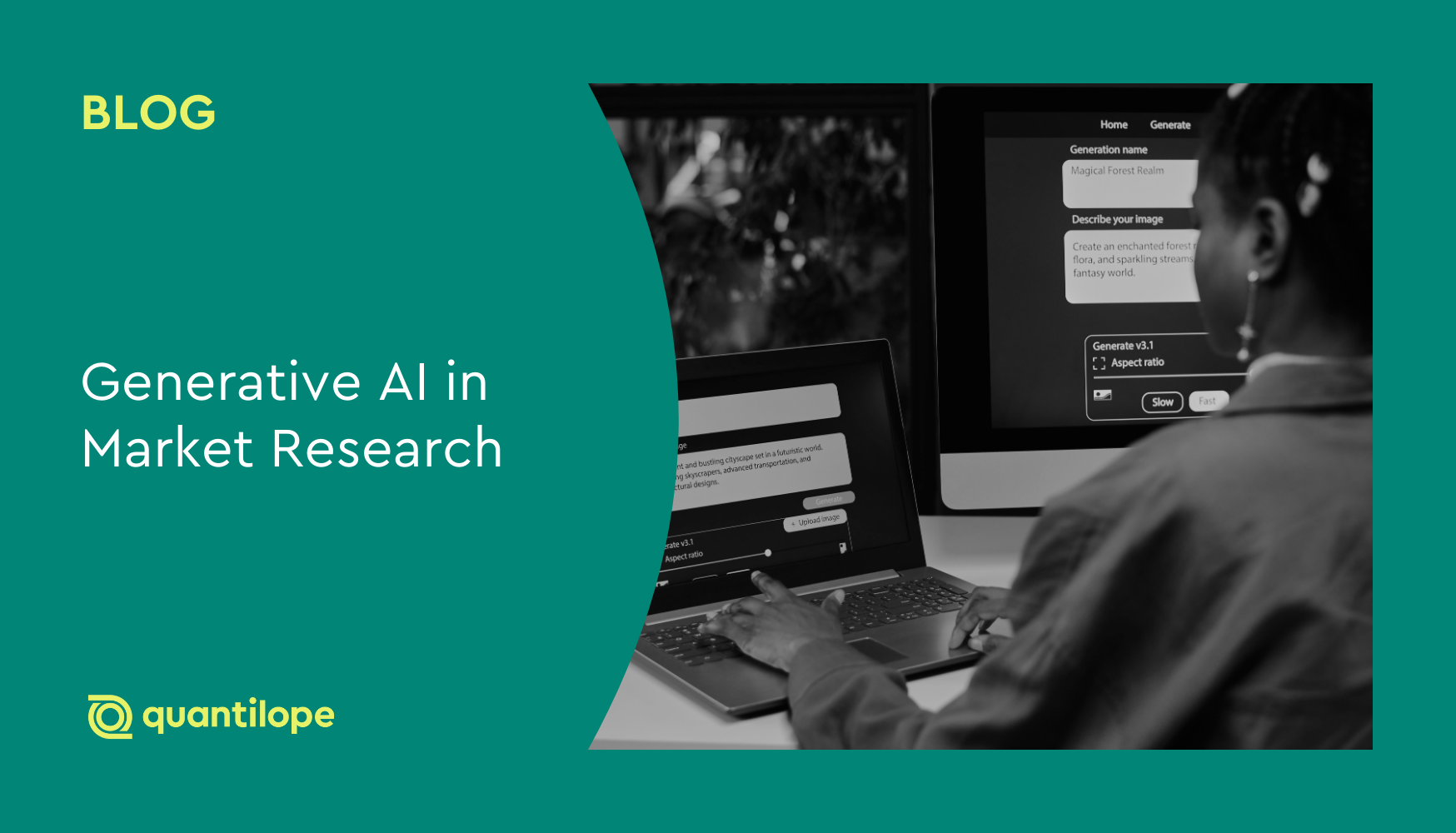Retail customer analytics strategically examine consumer data to uncover meaningful insights that drive retail business growth. This approach involves collecting and evaluating information about shopping behaviors, purchasing patterns, and customer preferences to reveal opportunities for improving operations and increasing revenue.
For retail businesses, customer analytics provide the foundation for understanding what customers are doing and why they are doing it - from shopping patterns and purchase decisions to brand preferences and satisfaction levels. By leveraging comprehensive data insights, retailers can create more targeted marketing strategies, improve operational efficiencies, and deliver personalized shopping experiences that drive customer loyalty and business growth.
Table of Contents:
- Understanding customer analytics in retail
- Why are customer analytics important for retail?
- Types of customer data vital to retail analytics
- Leveraging quantilope for retail customer analytics
Understanding customer analytics in retail
Customer analytics are a form of data that shows what customers are doing and why they are doing it. This includes information like where customers shop, why they visit those stores, what they buy, and which factors influence their purchase decisions. There are countless metrics that can be reviewed, from customer satisfaction to loyalty, basket size, average spend, brand preference, and advertising engagement. Customer analytics paint a well-rounded picture of the retail landscape and give insight into the customer’s point of view, thereby revealing new sales and marketing opportunities.
Why are customer analytics important for retail?
Customer analytics are all about understanding the customer. For any company aiming to fulfill customer needs and grow its business, understanding the retail customer through market research should be central to its activities. Without knowing what drives customers to opt for one channel or brand over another, or what drives them to spend more, marketing and sales initiatives are a guessing game left to gut feel.
One of the best ways to understand consumers is through the use of implicit association testing: 
Imagine you’re a home interior retailer. There are plenty of ways you can attract customers to your stores or websites: through your range of products, pricing, special offers, signage, seasonal activity, store or website layout - the list goes on and on. But often, the key to success is getting all of these elements right. How will you know what the latest trends or desired products are if you haven’t asked customers? How will you know what they would be prepared to pay for a pair of curtains from your brand? Or when they are most likely to shop for summer garden furniture? What about the semiotics of your signage, or how your store/web layout aids or hinders the purchase journey? It’s all about putting yourself in a customer’s shoes, and you can only do this if you analyze customer motivations, behavior patterns, and needs.
Below are just a few benefits of investing in customer analytics for your retail brand:
1. Increase average order value
There are certain factors that encourage higher spending and there are other factors that frustrate a purchase journey or turn customers away. Establishing what these factors are can help a retail business shape the positive influences and work on avoiding the negatives. Some of these factors have more to do with customer attitudes and their individual circumstances (to which retailers can respond with appropriate marketing strategies) while others are retailer-specific, such as website layout, store layout, or pricing/promotion (to which customers respond via their purchasing behavior).
For example, if a retail business understands that customers spend more at the end of the month after payday, or that new tableware is more likely to be sought as Thanksgiving approaches, the retailer can plan offers, advertising, and merchandising inventories accordingly. If the business determines that the purchase of one item prompts the purchase of another item - perhaps candles and bath salts are often bought alongside gift wrap - the store or website layout can be planned respectively around these products to maximize sales opportunities, or, they can even bundle these products together.
2. Improve operational efficiency
As retailers know, profit growth doesn’t just come from increased consumer spending. It also comes as a result of an efficiently-run business - i.e., avoiding unnecessary costs and optimizing investment in staff and product stock. When retailers understand consumer shopping patterns, they understand how best to direct their marketing spend to appeal to customers at the right time and relatedly, manage the supply chain. They know how to plan stocking activity to match purchase demands and how to organize staffing schedules to provide adequate customer support at the busiest times.
3. Create a more personalized shopping experience
Having a firm grasp of consumer behavior and the various customer segments that make up a customer base means that a retail business can tailor its offers to different types of people or shopping occasions.
For example, while some customers might shop for homeware once every year or so, others might be looking to purchase more frequently based on evolving trends. Different customer types will be motivated by different offers or product ranges, and businesses can leverage this information to create a customer journey that is more likely to result in higher customer engagement and conversion rates. Businesses can create in-store experiences that provide a personalized feel and shape loyalty programs for a dual retailer/customer benefit.
4. Measure impulse purchases
Knowing what happens at retail’s point of sale provides a window into the customer psyche that can inform product planning and merchandising. Had the customer entered a store or website planning to buy 12 dinner plates, or was it a special in-store offer that persuaded them to increase the value of their basket? Why did they purchase yet more Christmas tree decorations when they had intended only to shop for forks and knives — were factors such as in-store promotion and store layout at play? What was it about the product style, placement, or pricing that had prompted them to buy on a whim? This kind of information is hugely valuable for triggering those all-important unexpected consumer spending moments.
Back to Table of Contents
Types of customer data vital to retail analytics
We’ve seen how customer analytics are important to the retail industry, but which data sources should you be using to get the information you need? It’s a good idea to decide your methods of data collection before conducting research, as well as the type of datasets that you need to inform your business decisions.
For example, are you hoping for a large sample to ask a list of questions to rate various areas of your business? Are you interested in what your customers do? Do you want to know who your customers are (their demographics and defining characteristics)? Though some data can be collected in-store through Point-of-Sale, speaking directly to consumers through survey research is a very rich data collection method that can answer all of these questions.
It may well be a combination of the above. To help you decide, below are four data types that often feed into data analytics.
Qualitative Data
Qualitative research is a form of research that focuses on the quality of responses, not the quantity collected. It provides a deep dive into consumer attitudes through verbal discussions, focus groups, video survey responses, or ethnographic observations. The anecdotal evidence of qualitative customer behavior makes it easy for retail businesses to visualize the thought processes and motivations behind their customer journey.
Qualitative data is extracted from a sample of customers representative of the client’s target audience. The sample size is smaller than in quantitative research, enabling a depth rather than breadth of consumer insight. Individuals or groups of people are interviewed about the subject matter, and questioning is broad rather than specific, prompting respondents only with a topic to talk about rather than asking yes/no questions or rating according to a scale.
For example, a qualitative data question might sound like: ‘Tell me about your last shopping trip to X store - what prompted the visit and what happened while you were there?’ This line of questioning captures insights that might not be achieved through closed quantitative questioning and thus will highlight aspects of the shopping experience that might otherwise be missed. It also accesses the emotional, less rational parts of customer behavior that can be hard for respondents to pinpoint but which are useful for tailoring the customer experience and mirroring consumer language back to customers in brand communication.
Quantitative Data
Quantitative methods, on the other hand, aggregate numerical metrics from consumers and visualize key takeaways in chart form - such as bar charts, pie charts, etc. Quantitative data sets may not include the same depth from each individual respondent as qualitative data sets, but by collecting so many more respondents, brands can feel confident about the trends they are seeing and have the ability to cut data by many groups of interest.
Below are a few ways to leverage a quantitative data approach:
Identity Data
Identity data is the most fundamental of retail customer data, as it includes everything related to a person’s identity: their gender, age, geographical location, income level, household size, relationship status, and more. These data points are crucial for the logistics of contacting existing customers and ensuring customer databases are up to date. The demographic information around your target audience is also useful for segmenting customers and identifying patterns in customer behavior according to aspects like generational differences, locality, or life stage. Identity data is often collected online but can be captured in-store, via social media, or through customer loyalty programs as well.
Behavioral Data
Behavioral data, as the name suggests, focuses on what customers do and how they behave. It can reveal patterns such as how often people shop at a given store, how often they visit in-person versus online, which parts of a website they visit, how much they spend, and so on. It can also include asking consumers about the reasons behind their behavior, or their views on the stores they visit, to help explain the behavioral datasets.
Many retailers find that consumer trackers - that is, ongoing research programs that show how customer behavior changes over time - are the most useful way to collect behavioral data. This is because trackers can reveal the fluctuations in consumer activity and spending, and indicate what causes them - whether it’s a consumer-driven need, a societal event, or a result of a brand’s marketing or advertising activity. Tieing tracked customer data back to each of these different causes will help a business understand how to tailor its offer at the right time to the right people.
Descriptive Data
Descriptive data describes consumer behavior but without asking consumers to comment on it. It is a raw reflection of what people do - such as visiting a website, spending a certain amount on a product, or engaging with marketing collateral. This kind of data is often collected at the point of sale, via digital data collection techniques. The data collected can be further analyzed by consumer type, helping to form actionable customer segments for marketing purposes.
Back to Table of Contents
Leveraging quantilope for retail customer analytics
quantilope’s automated survey methods provide a rich source of data-driven insights for retail businesses, whether e-commerce or brick-and-mortar. All research is conducted online on quantilope’s end-to-end platform. Surveys around customer behavior and attitudes are quick and easy to create, with useful survey templates to make sure your survey covers all issues related to your topic. Surveys are then automatically sent out to respondents, with responses shown in real-time. Analysis and reporting are also automated, updating as soon as new data comes in. The platform displays charts in a beautifully-designed dashboard that provides a centralized location for all your research and is shareable with a single link so that all stakeholders can quickly and easily access customer data.
In addition to the ease and speed of one end-to-end platform, quantilope offers a suite of thirteen advanced AI-driven methodologies to help uncover insights in your area of retail. Among these thirteen methods are Key Driver Analysis (establishing the main drivers of purchase or brand appeal), MaxDiff (pinning down which features of a brand or offer are most/least important), Price Sensitivity Meter (to determine optimal price points), and A/B Testing (to find out which form or content of communication, such as elements of a marketing campaign, will be most effective in the market).
For retail brands seeking qualitative research, quantilope’s video research solution, inColor, provides a way to capture video responses from consumers, bringing their insights to life in their own words. inColor responses are also automatically analyzed for a variety of emotions, keywords, and sentiments.
To learn how customer analytics can make a noticeable difference to your retail business, get in touch below:



.png)
